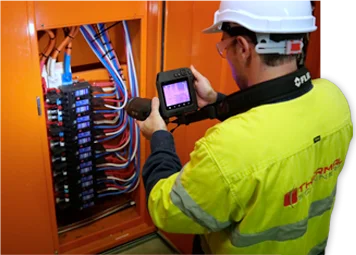Ideas for thermal scan: Special Options
When looking for a thermal camera, the two most important specs to look at are the detector's resolution and the camera's thermal sensitivity, of course. The amount of pixels that a thermal imager can use to fill a frame is the Detector resolution. The greater the number of pixels, the higher the resolution will be.
The thermal sensitivity of a thermal imaging camera is its ability to detect and record changes in temperature as tiny as one degree. A thermal imager with a sensitivity of 0.05 degrees Celsius, for example, may distinguish between two surfaces with a temperature differential of 0.05 degrees by using various colors to denote the colder and hotter surface. Make sure the thermal imager has a wide enough temperature range to cover your needs; one acceptable example of a thermal range is -4 degrees Fahrenheit to 2,192 degrees Fahrenheit.
Determine the Best Infrared Camera for Your Needs
If you want to use a thermal imager for any purpose, you should choose one that lets you adjust the emissivity and reflection. What we mean by "emissivity" is how effectively an object gives off infrared radiation. Today's thermal imaging cameras include built-in emissivity settings for a wide range of materials, ensuring accurate temperature readings regardless of the object's composition. The same is true when thinking deeply about something. Reflections can be avoided in thermal photos by using a camera that allows you to change the camera's angle while aiming at an object.
Modifying the Span and Level by Hand
The maximum and minimum temperatures detected by an automatic thermal imager are used to calibrate the display's span and level. But if you're only interested in a certain temperature range, this won't help you at all. Your ability to manually establish upper and lower temperature limitations for your examination makes it possible to narrow its scope.
Camera Digital Incorporated
A standard digital camera is built in so that the user can snap images of the topic with the thermal imagery. When assessing a complicated scene, this is a huge aid. A visible-light image will allow you to readily make comparisons and pinpoint problem spots.
Parallel Images
P-i-P, or Picture in Picture, mode lets the camera record both a digital and thermal image in the same frame. This aids the thermal scan operator in situations where enhanced vision of the subject is required without sacrificing thermal photography.
Infusion of Hot Plasma
Via a combination of thermal and digital images, "spots of interest" can be highlighted in a distinct color using thermal fusion. You can pinpoint the source of the issue quickly using this approach. These fundamental characteristics are what you should look for in a good thermal imager. As technology has progressed, thermal imagers have become increasingly user-friendly, with capabilities like Bluetooth connectivity, a standard camera mode, WiFi connectivity, and more. Don't skimp on functionality for the sake of style and convenience.
Conclusion
One common form of infrared pyrometer is the handheld or portable infrared camera. When an infrared thermometer needs to remain in one place during production, a fixed mount model is the most convenient option.






Comments
Post a Comment